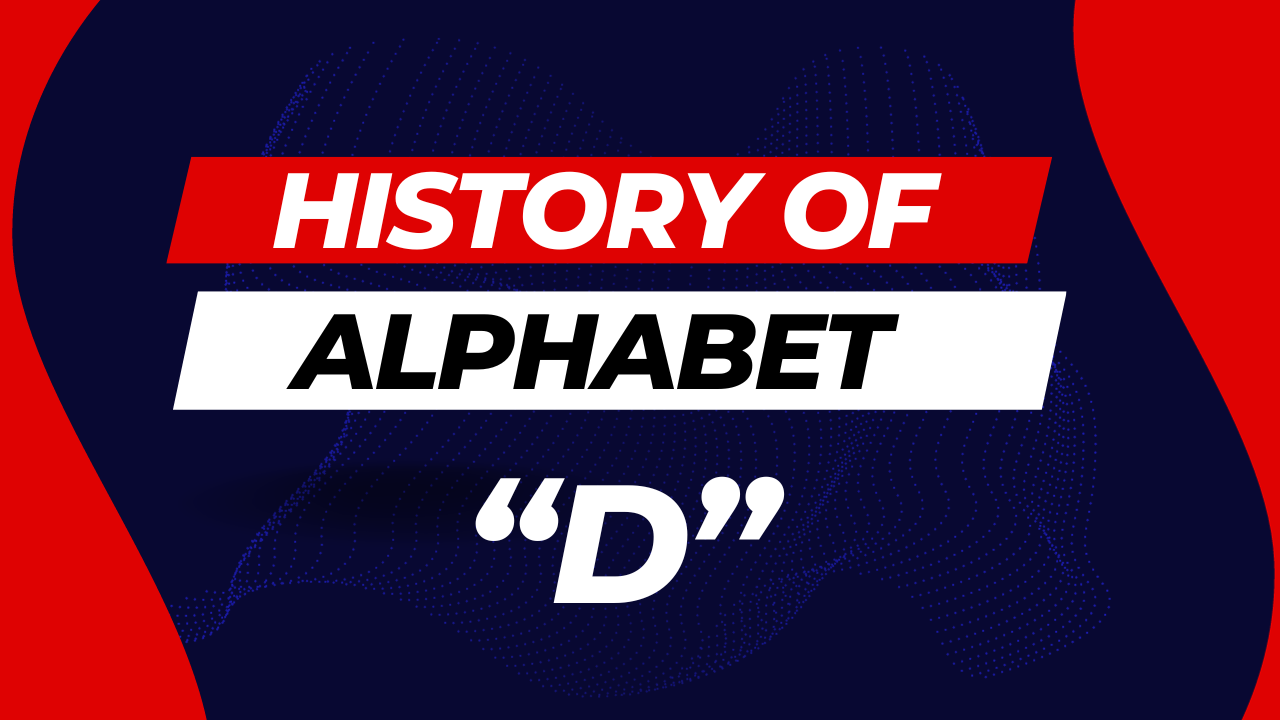Introduction:
The history of alphabets is a fascinating journey through time, revealing the evolution of written communication. In this article, we delve into the origins, development, and significance of Alphabet D. From ancient civilizations to modern languages, the letter 'D' has played a pivotal role in shaping human expression.
Ancient Origins of Alphabet D:
Alphabet D finds its roots in ancient Phoenician scripts, where it was represented as a door ('dalet' in Phoenician). The symbol resembled a door and signified a pathway, emphasizing transitions and opportunities.
Influence on Greek and Latin Alphabets:
The Phoenician alphabet, including Alphabet D, heavily influenced the Greek and Latin scripts. The Greeks adapted 'delta' (Δ) from the Phoenician 'dalet,' incorporating it into their language. Later, the Romans adopted this symbol, shaping it into the familiar 'D' we recognize today.
The Renaissance and Typography:
During the Renaissance, the art of typography revolutionized written communication. Alphabet D became a vital element in printed texts, showcasing its versatility in various fonts and styles. Printers and scholars alike marveled at the elegance of 'D,' solidifying its place in literary history.
Diverse Representations in Different Languages:
Different languages adapted Alphabet D, each infusing unique cultural nuances. In Arabic, 'dal' (د) represents the sound 'd' and possesses intricate calligraphic beauty. Similarly, in Cyrillic scripts, the letter 'Д' mirrors the shape of 'D,' bridging linguistic diversity with a common symbol.
Alphabet D in Modern Digital Age:
In the digital age, Alphabet D continues to thrive. Its presence in keyboards, digital fonts, and coding languages highlights its indispensability. From emails to programming, 'D' remains a keystroke away, embodying the essence of connectivity and communication.
Conclusion:
The history of Alphabet D is a testament to the enduring legacy of written language. From ancient civilizations to the modern world, the letter 'D' has seamlessly integrated into diverse cultures and languages, symbolizing doorways to knowledge and understanding.
FAQs:
Q1: What is the significance of Alphabet D in ancient Phoenician culture? Alphabet D, represented as a door ('dalet' in Phoenician), symbolized pathways and transitions in ancient Phoenician culture, signifying opportunities and new beginnings.
Q2: How did Alphabet D influence Greek and Latin scripts? The Greeks adapted 'delta' (Δ) from the Phoenician 'dalet,' which later evolved into the letter 'D' in the Latin alphabet. This influence shaped the sound and form of 'D' in these languages.
Q3: Are there variations of Alphabet D in different languages? Yes, different languages have their unique representations of Alphabet D. For example, in Arabic, 'dal' (د) represents 'd,' while in Cyrillic scripts, the letter 'Д' resembles 'D.'
Q4: How has Alphabet D evolved in the digital age? In the digital age, Alphabet D is widely used in keyboards, digital fonts, and coding languages, emphasizing its relevance and importance in modern communication and technology.
Q5: What is the symbolic significance of Alphabet D in literature and art? Alphabet D has often been associated with doorways, symbolizing opportunities, discovery, and new beginnings in literature and art, highlighting its versatile symbolism across creative disciplines.



.png)
.png)
0 Comments